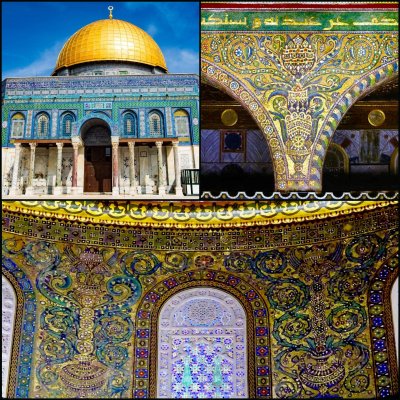The Dome of the Rock in Jerusalem, also known as al-Aqsa, “is a perfect example of Islamic interaction with Byzantine artistic and architectural traditions.” The technique and style of the mosaics is basically directly taken from the Romans. Perhaps, considering the lands were freshly conquered from the Romans – it is likely they were created by skilled Roman mosaicists hired for the job.

“The overall form of the architectural dome follows the Byzantine model of churches and martyriums (structures designed to house relics); and the mosaics decorating its interior draw extensively on Byzantine mosaic techniques and aesthetics in their execution of vegetal motifs. Thus, although the Quranic inscriptions adorning the Dome of the Rock promote the virtues of the Islamic faith over Christianity, the architectural and decorative programs are heavily indebted to the Byzantine Christian artistic tradition, which they recombine and reinterpret.” (Source: Met Museum)
This was one of the earlier Islamic construction projects, and thus it makes sense that “the Dome of the Rock’s structure and ornamentation are rooted in the Byzantine architectural tradition, yet its construction in the 7th century represents an early stage in the emergence of a distinct Islamic visual style.” (Source: Brittanica) This 7th century structure is symbolic of the shift the region was beginning from Roman civilization to an Islamic civilization.
Sources:

